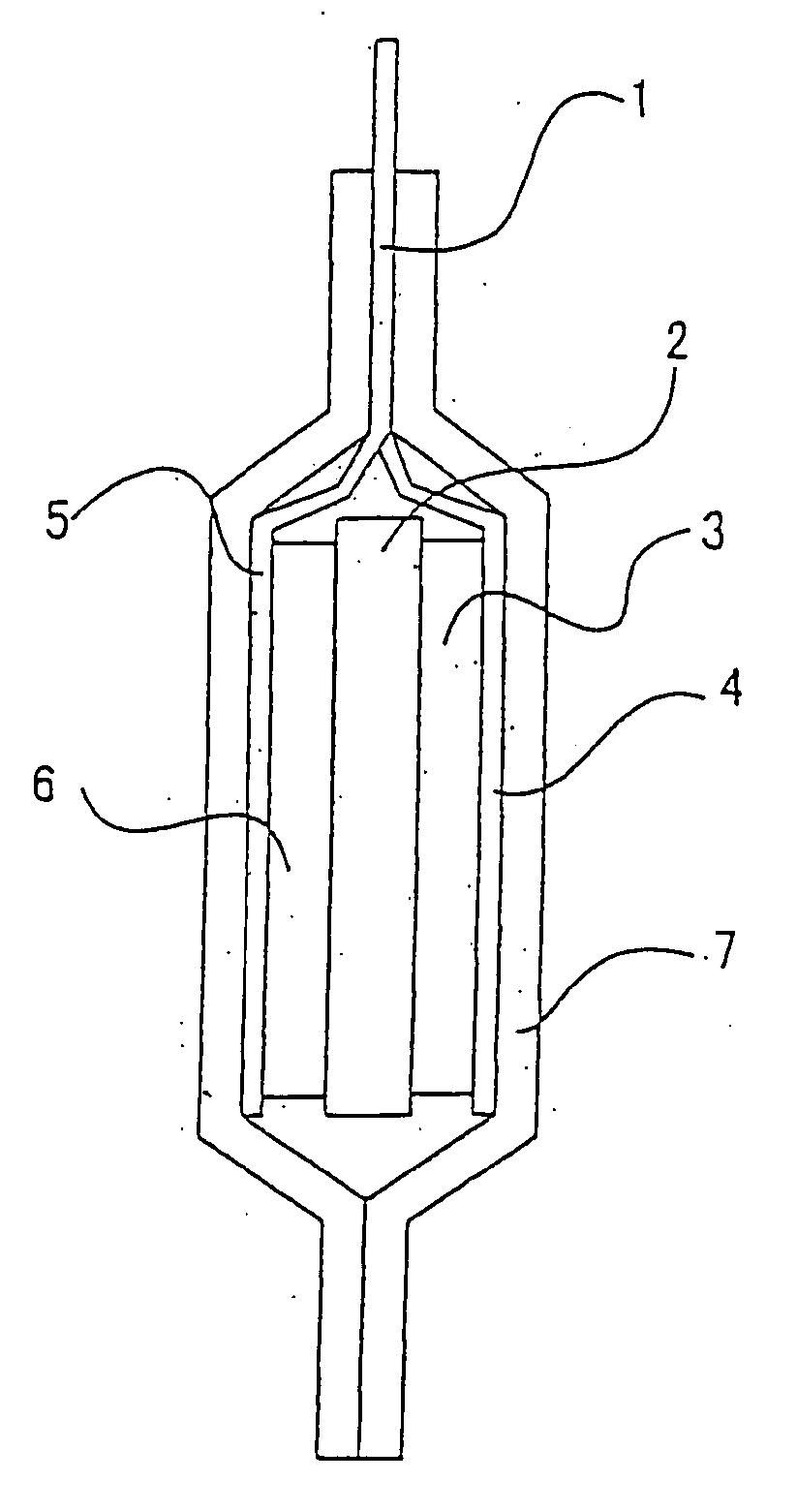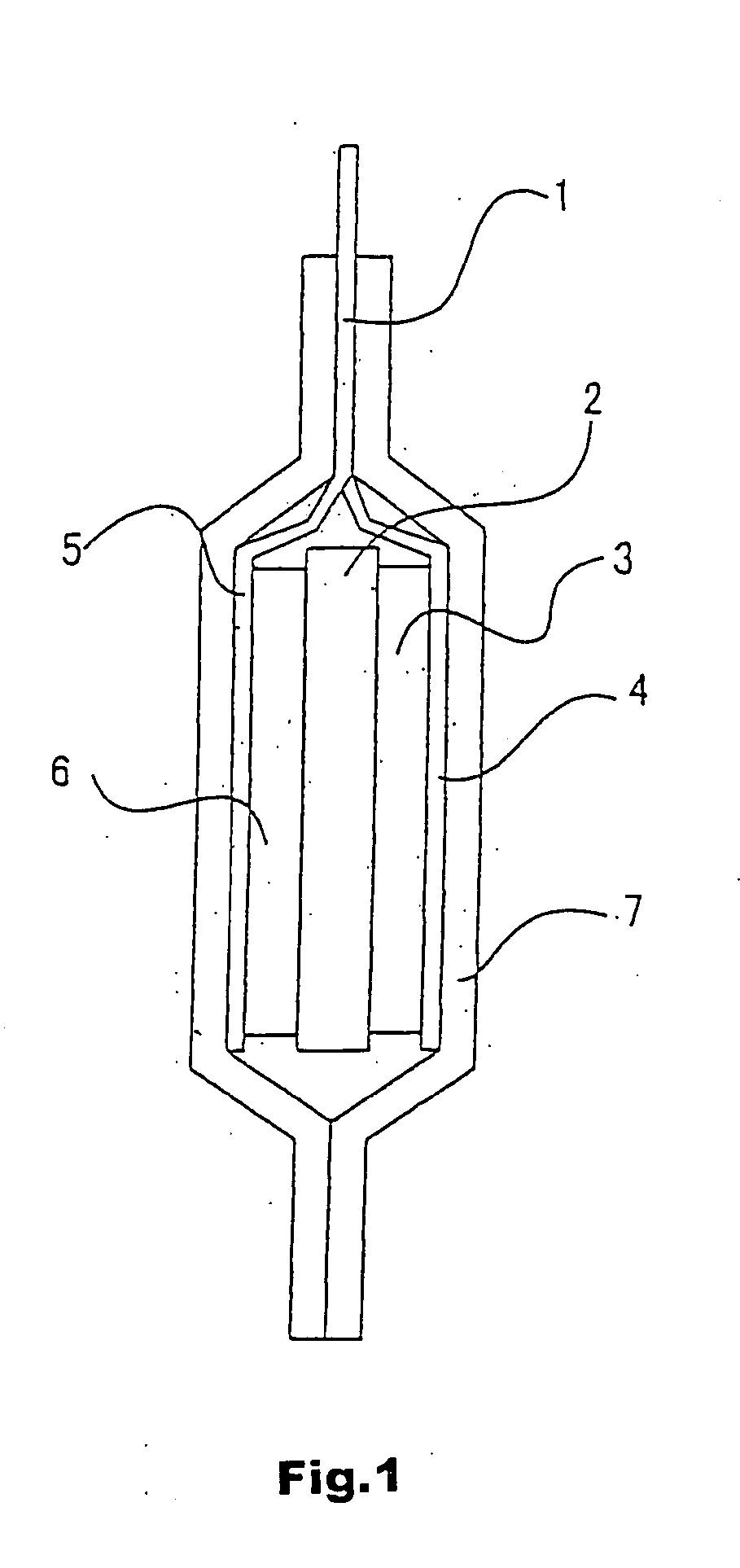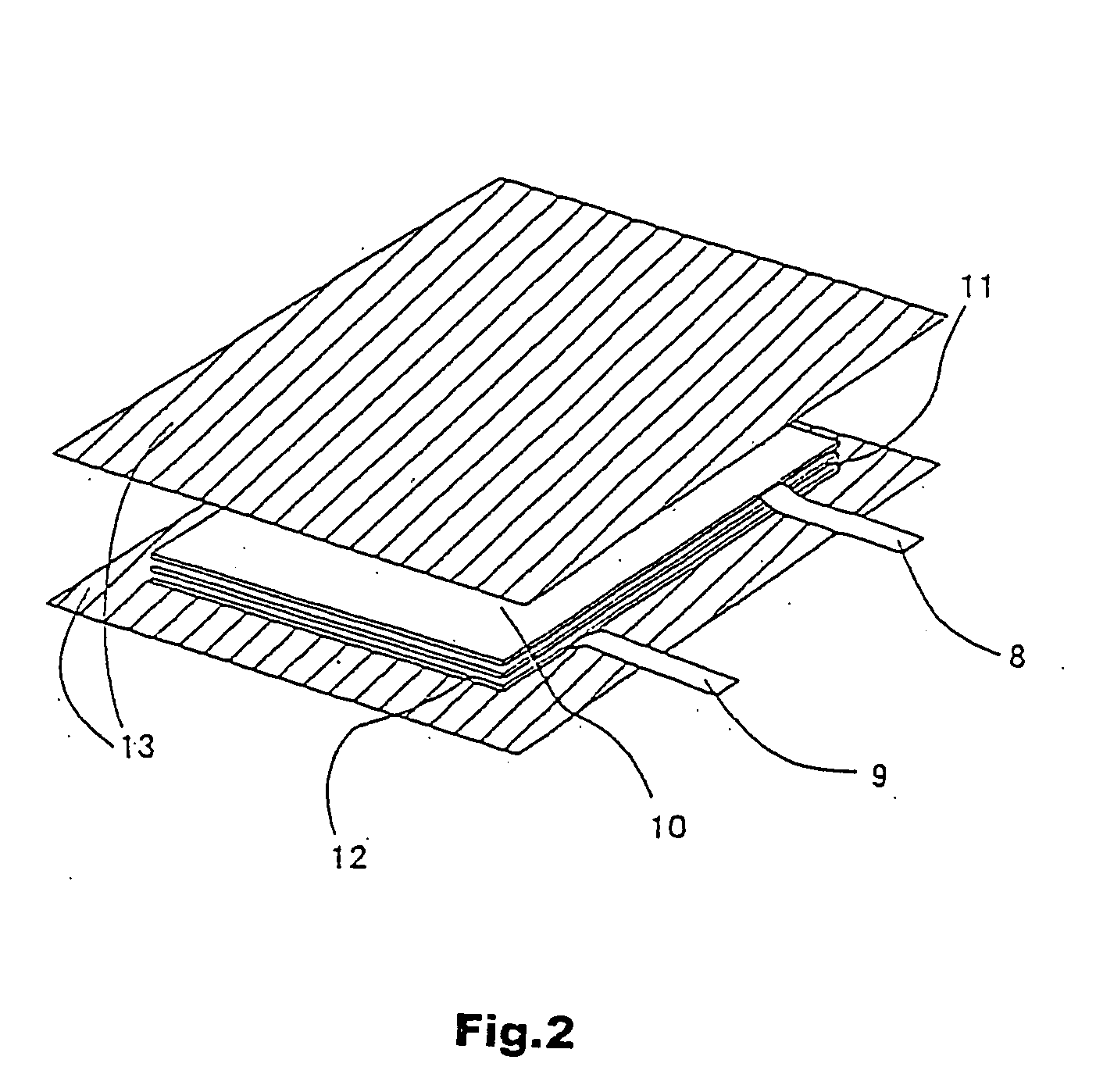Lithium polymer secondary cell
a secondary battery and lithium polymer technology, applied in the direction of non-aqueous electrolyte cells, cell components, sustainable manufacturing/processing, etc., can solve the problems of poor load characteristic and cycle characteristic of a battery, low capacity of a battery at low temperature, and insufficient consideration of a situation of practical use of a device. , to achieve the effect of excellent load characteristic and low temperature characteristi
- Summary
- Abstract
- Description
- Claims
- Application Information
AI Technical Summary
Benefits of technology
Problems solved by technology
Method used
Image
Examples
example 1
[0048] A lithium polymer secondary battery of the present invention was fabricated according to the following procedure: Lithium cobalt oxide LiCoO2 was used as a positive electrode active material. LiCoO2 was synthesized according to a publicly known method. Data obtained in X-ray diffraction measurement using CuKα line at an output of 2 kW from a sealed tube accommodating a Cu target as an X-ray source, a valence analysis of Co with the iodometry method and an element analysis with ICP confirmed a specimen of the synthesized compound as LiCoO2.
[0049] The synthesized compound was pulverized in a mortar and mixed with 10 wt % of acetylene black as a conductor and 10 wt % of Teflon (R) resin as a binder. The mixture was dissolved into a solvent such as N-methyl-2-pyrrolidone or the like to produce a slurry and the slurry was applied onto an aluminum foil according to a doctor blade method, followed by drying and then pressing.
[0050] A surface of the positive electrode thus fabricat...
example 2
[0056] A surface of a positive electrode fabricated in the same procedure as in Example 1 was covered with a non-woven fabric of 20 μm in thickness and the positive electrode and the non-woven fabric were impregnated with a precursor solution prepared in a procedure that LiBF4 was dissolved, at a concentration of 1 mol / l, into 48.5 wt % of ethylene carbonate, 48.5 wt % of γ-butylolactone and 3 wt % of vinylene carbonate as an electrolyte and furthermore, 5 wt % of a copolymer of ethylene oxide and propylene oxide relative to the electrolyte and a photopolymerization initiator were mixed into the resulting solution, followed by polymerization under illumination with ultraviolet. A negative electrode fabricated in the same procedure as in Example 1 was impregnated with a precursor solution prepared in a procedure that LiPF6 was dissolved, at a concentration of 1 mol / l, into 45 wt % of ethylene carbonate, 45 wt % of γ-butylolactone and 10 wt % of vinylene carbonate as an electrolyte an...
example 3
[0058] As a positive electrode active material, LiNiO2 was used. LiNiO2 was produced according to a publicly known method. An electrode was fabricated in the same procedure as in Example 1 using LiNiO2. A surface of the positive electrode was covered with a non-woven fabric of 20 μm in thickness and the positive electrode and the non-woven fabric were impregnated with a precursor solution prepared in a procedure that LiBF4 was dissolved, at a concentration of 1 mol / l, into 50 wt % of ethylene carbonate and 50 wt % of γ-butylolactone (therefore 0 wt % of vinylene carbonate) as an electrolyte and furthermore, 5 wt % of a copolymer of ethylene oxide and propylene oxide relative to the electrolyte, a photopolymerization initiator and a thermal polymerization initiator were mixed into the resulting solution, followed by polymerization under illumination with ultraviolet. A negative electrode fabricated in the same procedure as in Example 1 was impregnated with a precursor solution prepar...
PUM
| Property | Measurement | Unit |
|---|---|---|
| thickness | aaaaa | aaaaa |
| particle size distribution | aaaaa | aaaaa |
| particle size distribution | aaaaa | aaaaa |
Abstract
Description
Claims
Application Information
 Login to View More
Login to View More - R&D
- Intellectual Property
- Life Sciences
- Materials
- Tech Scout
- Unparalleled Data Quality
- Higher Quality Content
- 60% Fewer Hallucinations
Browse by: Latest US Patents, China's latest patents, Technical Efficacy Thesaurus, Application Domain, Technology Topic, Popular Technical Reports.
© 2025 PatSnap. All rights reserved.Legal|Privacy policy|Modern Slavery Act Transparency Statement|Sitemap|About US| Contact US: help@patsnap.com



